Watch a new 7-part Interview Series with Dr. Burzynski with Eric Merola, the director of the Burzynski documentary series.
Tag Archives: Burzynski Clinic
Burzynski: Peer-Reviewed Published Articles (most recent to 2015)
- Tuesday, 24 November 2015 12:41
- Written by admin
- 0 Comments
List of recently published peer-reviewed articles related to
Antineoplastons and Burzynski’s “personalized cancer therapy”
ANTINEOPLASTONS:
2015
A Phase II Study of Antineoplastons A10 and AS2-1 in Adult Patients with Primary Brain Tumors—Final Report (Protocol BT-09)
Link: http://www.scirp.org/Journal/PaperInformation.aspx?PaperID=61444
———-
A Phase II Study of Antineoplastons A10 and AS2-1 in patients with recurrent Anaplastic Astrocytoma—Final Report (Protocol BT-15)
Link: http://www.ccsenet.org/journal/index.php/cco/article/view/47383
———-
A Phase II Study of Antineoplastons A10 and AS2-1 in patients with Brainstem Gliomas.
The Report on Non-Diffuse Intrinsic Pontine Glioma (Protocol BT-11)
Link: http://www.scirp.org/journal/PaperInformation.aspx?PaperID=55563#.VTRM6hPF_t1
———-
A Phase II Study of Antineoplastons A10 and AS2-1 in Adult Patients
With Newly-Diagnosed Anaplastic Astrocytoma – Final Report (Protocol BT-08)
Link: http://www.ccsenet.org/journal/index.php/cco/article/view/42461
———-
2014
———-
The response and survival of children with recurrent diffuse intrinsic pontine glioma based on
phase II study of antineoplastons A10 and AS2-1 in patients with brainstem glioma
Pubmed link: http://www.ncbi.nlm.nih.gov/pubmed/24718705
———-
A Phase II Study of Antineoplastons A10 and AS2-1 in Children with High-Grade Glioma.
Final Report (Protocol BT-06), and Review of Recent Trials
Abstract: http://www.scirp.org/journal/PaperInformation.aspx?paperID=46242#.VMF91i7F-Qw
———-
A Phase II Study of Antineoplastons A10 and AS2-1 in Adult Patients with Recurrent Glioblastoma Multiforme:
Final Report (Protocol BT-21)
Abstract: http://www.scirp.org/journal/PaperInformation.aspx?PaperID=49564#.VMF-dS7F-Qw
———-
A Phase II Study of Antineoplastons A10 and AS2-1 in Children with Recurrent, Refractory or Progressive Primary Brain Tumors—
Final Report (Protocol BT-22)
Abstract: http://www.scirp.org/journal/PaperInformation.aspx?PaperID=49568#.VMF-wy7F-Qw
———-
Recurrent Glioblastoma Multiforme— A Strategy for Long-Term Survival
Abstract: http://www.scirp.org/journal/PaperInformation.aspx?PaperID=49566#.VMF_SS7F-Qw
———-
The Effect of Antineoplastons A10 and AS2-1 and Metabolites of Sodium Phenylbutyrate
on Gene Expression in Glioblastoma Multiforme
Abstract: http://www.scirp.org/journal/PaperInformation.aspx?PaperID=49471#.VMF_jy7F-Qw
**********
PERSONALIZED GENE-TARGETED
2015
———-
A Case of Sustained Objective Response of Recurrent/Progressive Diffuse Intrinsic Pontine Glioma
with Phenylbutyrate and Targeted Agents
Abstract: http://www.scirp.org/journal/PaperInformation.aspx?paperID=52985#.VMF9NS7F-Qw
———-
2014
Preliminary Findings on the Use of Targeted Therapy in Combination with Sodium Phenylbutyrate
in Colorectal Cancer after Failure of Second-Line Therapy—A Potential Strategy for Improved Survival
Abstract: http://www.scirp.org/journal/PaperInformation.aspx?PaperID=51577#.VMF_6S7F-Qw
———-
Preliminary Findings on the Use of Targeted Therapy in Combination with Sodium Phenylbutyrate in
Advanced Malignant Mesothelioma: A Strategy for Improved Survival
Abstract: http://www.scirp.org/journal/PaperInformation.aspx?PaperID=50986#.VMGALS7F-Qw
———-
Preliminary Findings on the Use of Targeted Therapy in Combination with Sodium Phenylbutyrate in
Recurrent Advanced Pancreatic Cancer—A Potential Strategy for Improved Survival
Abstract: http://www.scirp.org/journal/PaperInformation.aspx?PaperID=50936#.VMGAci7F-Qw
———-
Preliminary Findings on the Use of Targeted Therapy with Pazopanib and Other Agents in Combination
with Sodium Phenylbutyrate in the Treatment of Glioblastoma Multiforme
Abstract: http://www.scirp.org/journal/PaperInformation.aspx?paperID=52600#.VMGAtC7F-Qw
Just released: BURZYNSKI: CANCER CURE COVER-UP (2016)
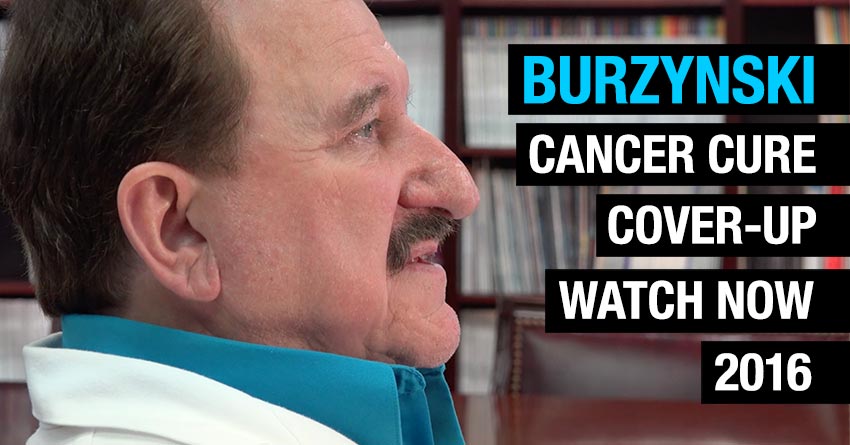
Your rental or purchase of this new release helps to support and maintain our ability to keep this story alive and in the public’s eye, only $5.00.
Jessica Ressel-Doeden – Inoperable Diffuse Intrinsic Brainstem Glioma (DIPG) – Cured with Medical Records
- Sunday, 09 August 2015 23:53
- Written by admin
- 0 Comments
Jessica Ressel-Doeden was diagnosed with a diffuse, intrinsic, childhood brainstem glioma (DIPG) in March of 1996 at age eleven.
According to the available data there has not been a single case of a verified cure (5-year survival) with patients diagnosed with diffuse (inoperable) childhood brainstem glioma treated with radiation and/or chemotherapy in any FDA-supervised experimental clinical trial in the history of medicine. Dr. Burzynski’s Antineoplastons hold the only cures to date—with a cure rate in some studies as high as 27.5% [PDF of original report, table page 172] + [Chemo/Rad – PubMed 2005] [ANP – PubMed 2003] [ANP – PubMed 2006] [ANP – Cancer Therapy 2007]
[The Lancet 2006 explains grim outlook – “survival remains static”].
** April 2014 Peer-reviewed clinical trial report for DIPG using Antineoplastons **
Following her initial diagnosis, the Ressel’s were informed that the only method approved by the FDA to “treat” her condition would be radiation. The radiologist informed the family that radiation would be shot “through the ears, burning her healthy cells from the outside in—causing permanent deafness, all of the hair around her ears would be gone—never grow back, her ears would become deformed and burnt, her pituitary gland would be destroyed—the gland that allows a human to grow and develop, and if she survived the treatment she would become a vegetable and incapable of taking care of herself.”
Considering that radiation treatment has never been shown to cure a single patient with her condition, combined with the devastating side effects such a treatment would inflict on an eleven-year old child—her parents declined the radiation treatment offered by her oncologists and decided to have Jessica treated by Dr. Burzynski instead.
Medical Records
1. Diagnosis: Jessica underwent an MRI on April 10, 1996 at the St. Louis Children’s Hospital which revealed a tumor in her brainstem. Her diagnosis was also confirmed on May 7, 1996 upon initial consultation with Dr. Burzynski. She had multiple MRIs after she was admitted into the Burzynski Clinic. There is also multiple third-party confirmations of diagnosis by physicians from the Springfield Clinic and the Missouri Eye Institute demonstrated by letters written to the Ressel’s insurance company.
2. Recovery: On May 8, 1996, Jessica began antineoplaston treatment. Her tumor disappeared and reappeared multiple times throughout the course of 14 months after the start date of treatment. On June 27, 1997, her tumor disappeared permanently. She has had multiple MRIs of the brain since that time which have all been negative for tumor recurrence—with the last MRI being May 20, 2005. Read Jessica’s treatment summary here. Read Jessica’s tumor measurements here. After her full recovery, the Mid-Atlantic Open MRI of Springfield, MO confirmed her tumor-free MRIs from 11/97 to 5/98 [PDF all medical records and sources for this paragraph].
3. FDA-supervised clinical trial data comparing chemotherapy and radiation treatment to antineoplaston treatment in patients with diffuse, intrinsic, childhood brainstem glioma. It has been clearly demonstrated that of 107 patients treated with chemotherapy and radiation with this type of tumor: 0.9% of these patients were cancer-free at the end of treatment, with no patient surviving 5 years after diagnosis. Of the patients treated with antineoplastons with this type of tumor: 27.5% of them were cancer-free at the end of treatment, with 27.5% of the patients living at least 5 years after diagnosis. Therefore, Jessica Ressel’s recovery after being treated with antineoplastons is not a mere anecdotal case (See sources from start of this post above).
Most would assume that such results would be front page news across the world, or would be grounds for Dr. Burzynski to receive the Nobel Prize in medicine. Sadly, these peer-reviewed results have been universally ignored by mainstream medicine.
Raising the Money to Receive Her Antineoplaston Treatment
Unfortunately, most insurance companies will not cover antineoplaston treatment. The Ressel family had to come up with $6000 per month to pay for her treatment all by themselves. The high cost of antineoplaston treatment is directly due to the United States government’s refusal to allow any tax-payer money to be granted to fund the FDA-supervised clinical trials that Jessica participated in—while simultaneously granting PhRMA tens of millions of dollars to fund similar FDA-supervised clinical trials with inferior outcomes.
Below is a TV news footage montage from 1996-1997 covering Jessica’s story, fundraisers and more:
The Ronald McDonald House Charities®
During our interview with the Ressel family, Robin said that she “had called the Ronald McDonald House to see if we’d be able to stay there, because we were going to have to stay in Houston for a while, I was talking to a volunteer on the phone—when I mentioned we had an eleven-year old we were taking to see Dr. Burzynski and we needed a place to stay for a couple of weeks—you could hear whispering going on in the background, the volunteer was being prompted what to say, and The Ronald McDonald House refused to allow us to stay there because we weren’t an M.D. Anderson patient. I felt bad for the volunteer, you could tell she was being told what to say.” Dan followed up by saying “There are a lot of programs out there, but I will never give a dime to the Ronald McDonald House. We were in a desperate situation, and they refused us because we were a patient of Dr. Burzynski”.
Joining the Fight in Preserving Burzynski’s Freedom
Jessica Ressel was being treated by Dr. Burzynski in 1996, several months after the FDA’s 5th grand jury against Dr. Burzynski resulted in an indictment. “The government was more frustrating than the cancer itself.” The Ressel family traveled to Washington DC to meet hundreds of other Burzynski patients to speak out against the FDA’s attempt to remove him from society.
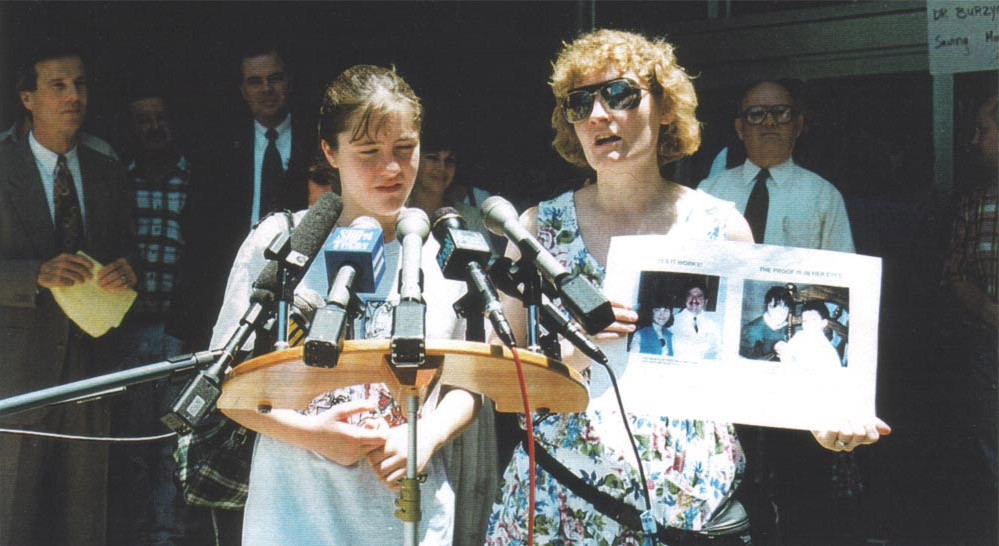
Jessica Ressel’s medical records are published by written authorization by Jessica Ressel-Doeden.
2015: Texas Medical Board vs. Burzynski (again)
- Sunday, 09 August 2015 23:05
- Written by admin
- 0 Comments
The attempts to knock Burzynski out of business is like a game of “whack-a-mole” between state and federal agencies. For the time being the FDA is leaving Burzynski alone, but the Texas Medical Board (TMB) is trying to shut his clinic down once again.
The Texas Medical Board can no longer go after Burzynski for using Antineoplastons, as they lost countless court cases against Burzynski, ending in the State Supreme Court. Now they have changed their tactics and going after him in other ways. This case, like the countless ones before it will be a loss for the TMB, but the TMBG isn’t interested in winning any of the cases, it is a way to attempt to drain Burzynski financially.
Read the latest “complaint” against Burzynski here. Their lead prosecutor left the case for unknown reasons, postponing the case until November of this year. This is an interesting read from an independent moderator at “Dr. Social”, here.Mary Jo Siegel – Non-Hodgkin’s Lymphoma – cured – with medical records
- Friday, 07 August 2015 02:32
- Written by admin
- 0 Comments
To fully utilize this article, click on the blue text to link to the source being discussed.
Mary Jo Siegel was diagnosed with “Non-Hodgkin’s Lymphoma, Stage IV, low grade small cleaved cell” in February of 1991.
She underwent surgery to remove part of her small intestine and mesenteric lymph nodes. By September 1991, she was found to have involvement in her bone marrow. The treatment options given to her was chemotherapy, radiation and a bone marrow transplant.
She refused all of these treatments and decided to undergo Dr. Burzynski’s Antineoplaston therapy on April 3, 1992. By December 1996 all of her cancer was gone. Mary Jo Siegel has been healthy and cancer-free ever since.
Medical Records
#1 Record of Diagnosis into recovery:
UCLA August 1992 Pathology Report & More
St. Johns Medical Center September 1992 Pathology Report
UCLA November 1993 Bone Marrow Report
Houston December 1993 Bone Marrow Pathology
UCLA April 1994 Bone Marrow Report
UCLA July 1994 Bone Marrow Pathology
#2 Direct Third-Party Verification of Recovery:
#3 Additional Third-Party Verification of Recovery:
Thousand Oaks Radiology November 2007
#4 Dr. Burzynski’s records:
Full schedule of tumor measurements
Fighting for her life in Washington DC
Mary Jo and Steve Siegel were two of the leaders in the fight in Washington DC and around the country during Dr. Burzynski’s indictment. Not only were they busy trying to defeat her disease, but they fought equally as hard to be able to have the right to even have access to Antineoplastons. The Siegels turned their home into a centralized home base for the nearly $700,000.00 raised for Burzynsk’s legal defense through Dr. Julian Whitaker’s Newsletter “Health and Healing” in the 1990s.
Given their leadership roles, they were featured on CBS News’ “48 Hours” on April 4, 1996. Watch below to view the segment.
Continuing Their Activism Role
The Siegel’s attended the Newport Beach Film Festival Screening and participated in a Q&A on April 25, 2010.
Twenty years ago, Mary Jo Siegel received the terrible news that she had stage IV low grade non- Hodgkin’s lymphoma. “I was told that I was going to die of the disease. I was stage IV, and the type of lymphoma that I had was always fatal,” she says. Siegel and her husband began researching the disease and traveled all over the country to see seven different lymphoma specialists. Because she lives in California, she chose a doctor at UCLA. After he told her that she would need a bone marrow transplant, Siegel and her husband went to the UCLA medical library to research the procedure (this was before the age of Internet accessibility). “We found out that one person out of ten died from the bone marrow transplant. I also knew from what the doctor was telling me that they would give me as much radiation as people who were within one mile of Hiroshima. I was also told that I would get high dose chemotherapy and that they would bring me as close to death as possible and then rescue me,” she remembers. “They also wanted me to sign a release that was about an inch thick. It said that within five years that there was a fifty percent chance that I would get another cancer and that it would affect my heart, lungs, kidneys – everything. So I would never be the same. But I thought that if this is the only thing that will save my life, then I am going to do it,” she says. “But we decided to search a little bit longer, and I heard about Dr. Burzynski. I was in a cancer support group and someone told me about a doctor in Houston, Texas who was treating cancer and having great success with lymphomas.”
“I met Dr. Burzynski, and I felt like I was in the right place immediately. I just felt so warm and hopeful,” says Siegel. She goes on to say that she did not feel this way about any of the hospitals that she visited. “UCLA, Stanford, USC – I went to all of the great learning and teaching facilities. I had even gone all the way to Dana Farber. So I felt like I knew what was out there and what was being offered.” After learning that Dr. Burzynski’s treatments were non-toxic, Siegel says, “I felt like I’d be a fool not to try this first.” She decided that she could always get the bone marrow transplant if Dr. Burzynski’s treatment failed. “So I started on his treatment against the wishes of my doctor at UCLA. When I told him about Dr. Burzynski, he has some very negative things to say. But I told him that it was my body and that I was going to do what I felt was best. He told me that I had better bring my checkbook because Dr. Burzynski was an entrepreneur and that he had nothing for me. And the truth is that you better have your checkbook at UCLA, Stanford or anywhere you go.”
Siegel admits that the medication was very expensive because Dr. Burzynski manufactured it himself at the time. “When I was being treated, it was about $5000 a month. I had to get a loan on my house. It wasn’t an easy decision because I had three children and certainly didn’t want to leave my family destitute. I didn’t want to leave them at all!” she says. She notes that the treatment was not covered by insurance.
She began Dr. Burzynsky’s Antineoplaston therapy which at the time was available in capsule form or as an infusion that was delivered through a catheter. Siegel was started on the capsules first to see if she would respond favorably. “I stared on the capsules, and I was on them for about a month. But the tumor on my neck was actually getting bigger,” she says. Although Dr. Burzynski explained to her that tumors can actually look bigger when they are breaking down, there was no way to be sure if that was what was happening. Because of that, Siegel chose to have a catheter implanted in her chest so that she could receive infusions of stronger doses of the medication directly into her bloodstream. Siegel notes that the only side effect that she experienced from the treatment was fatigue. “Nobody even knew that I was sick. My hair never fell out, I wasn’t nauseous, I drove all my carpools – I lived a normal life on this treatment. That is why I believe that everyone deserves this treatment if they want it.”
Siegel responded very favorably to the infusions. “I’m telling you, I think that I was on the infusion for less than three months and the tumor on my neck was gone. Gone in three months! One night I got up and my neck was kind of sore, and I looked at it and it was gone,” she remembers.
Because of the type of cancer that Siegel had, the fact that her tumor disappeared did not mean that her cancer was gone. “Because non-Hodgkin’s lymphoma is a blood disease – it’s cancer of the lymph nodes – I had it everywhere. You can’t just remove a tumor surgically because the cancer is all through your body.” Nine months after beginning treatment, she was declared to be in remission. “I stayed on the treatment for another three months just to be sure,” she says. “I had these bone marrow tests which were very painful, and I wanted to have two bone marrow tests clear before I went off the treatment, and that is what I did.” Bone marrow tests detect the presence of cancer, and “clear” tests indicate that no cancer was detected. While being treated by Dr. Burzynski, Siegel continued to see her doctor at UCLA who she describes as a very well known lymphoma specialist. When asked what the doctor said when her tumor disappeared, she answers, “He said it was spontaneous remission. He saw my medical records, and he saw my CT scans because I did all my CT scans at UCLA. He saw them go from cancer everywhere, stage IV, to nothing. Every test that I had since starting Dr. Burzynski’s treatment showed a reduction in my tumor.” When asked why he would not acknowledge that Dr. Burzynski’s treatment was responsible for her remission, she says, “I’ve been asked this question a million times, and I believe that what Dr. Burzynski is doing makes what he is doing wrong. He’s an oncologist. He sees very sick people, and he’s giving them chemotherapy that most of the time doesn’t work.”
She goes on to tell of her experiences while waiting to see the doctor at UCLA. “When I would go there, there would be a waiting room filled with cancer patients, and it was never pleasant. But I would start telling people about Dr. Burzynski – there was always an hour wait by the way. Then, all of sudden they would come out and get me and put me in a room inside and let me wait there,” she says. By putting her in a private room, Siegel was no longer able to tell others about Dr. Burzynski. She still remembers the day that she met a nineteen year old girl who had just had a bone marrow transplant and probably weighed only about ninety pounds. “I couldn’t believe it that my doctor didn’t tell her that there was a doctor doing something else. My heart was breaking for this girl,” she says.
Siegel continued to get CT scans after she went into remission, and her 1995 scan detected enlarged lymph nodes. “My oncologist said that he wanted to give me a round of chemo to knock it out. Of course, I said ‘no way’. I called Dr. B. and he said that he would give me some capsules. He also told me that it could be the flu or something and that we all get enlarged lymph nodes here and there. He did not want me to do a biopsy. Conventional doctors will give you biopsies at the drop of a hat, but Dr. B. said that if you do a biopsy you disturb cells. That makes them move around, and you don’t want that. It just makes sense that cancer cells will travel. He suggested that I take the capsules and then get another CT scan, so that’s what I did.”
During that time, Dr. Burzynski was in the middle of an FDA trial. He was being indicted for distributing non-FDA approved drugs across state lines, and Siegel says that she was considered as an unindicted co-conspirator. She was actively involved in the trial and organized Dr. Burzynski’s patients to protest outside of the trial and also helped raise money for his legal defense. The television news program 48 Hours had heard about Siegel and followed her during the trial. “They interviewed my doctor at UCLA and said, ‘She thinks she’s cured, what do you think?’ My doctor said, ‘I think that she’s a spontaneous remission. She’s not cured.’ He made it sound like after I had the CT scan that it (the cancer) would be there,” Siegel remembers. 48 Hours continued to follow her as she had her CT scan and were with her for about a week. “My CT scan was clear,” she says. “It was so great. It made my doctor at UCLA look foolish because he was so sure that it wasn’t going to be clear.” 48 Hours wanted to interview her doctor after the CT scans results were read, but the doctor refused to be interviewed.
Siegel celebrated when the trial resulted in a hung jury and then again when the doctor was cleared of the charges in a second trial. She continues to travel to Houston to see Dr. Burzynski for her annual checkups. For the last twenty years, she has dedicated a great deal of time and effort to educating people about Dr. Burzynski and the work that he is doing. She notes that he has made many advancements and changes to his treatment methods over the years and that he is currently conducting clinical trials of his drug for patients with brain tumors.
Siegel created and maintains a web site, http://burzynskipatientgroup.org that includes patient success stories and treatment information. When asked why she does this, she answers, “I will be grateful to the day I die. There’s not a day that I don’t thank God for Dr. Burzynski. He saved my life. I was told that I was going to die, and he told me from the very beginning that he didn’t know but that he thought that he could help me.”
She acknowledges that there is a lot of negativity directed towards Dr. Burzynski. “It’s all lies,” she says. “He’s a genius.”
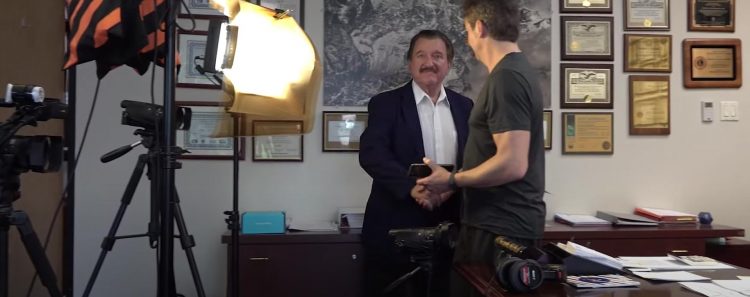


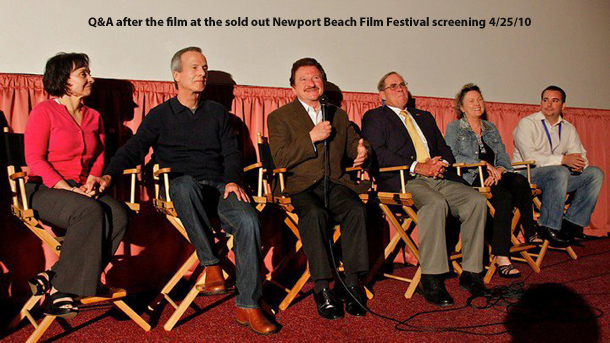
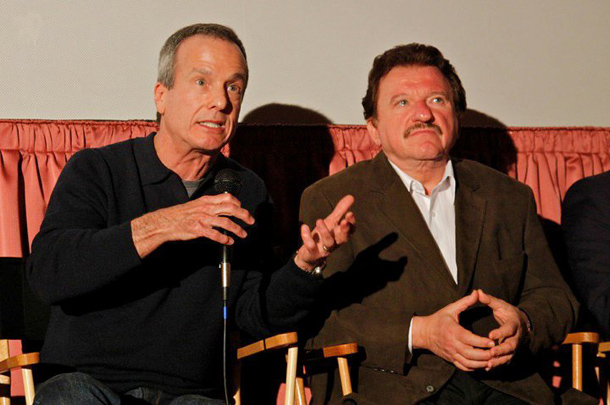
You must be logged in to post a comment.